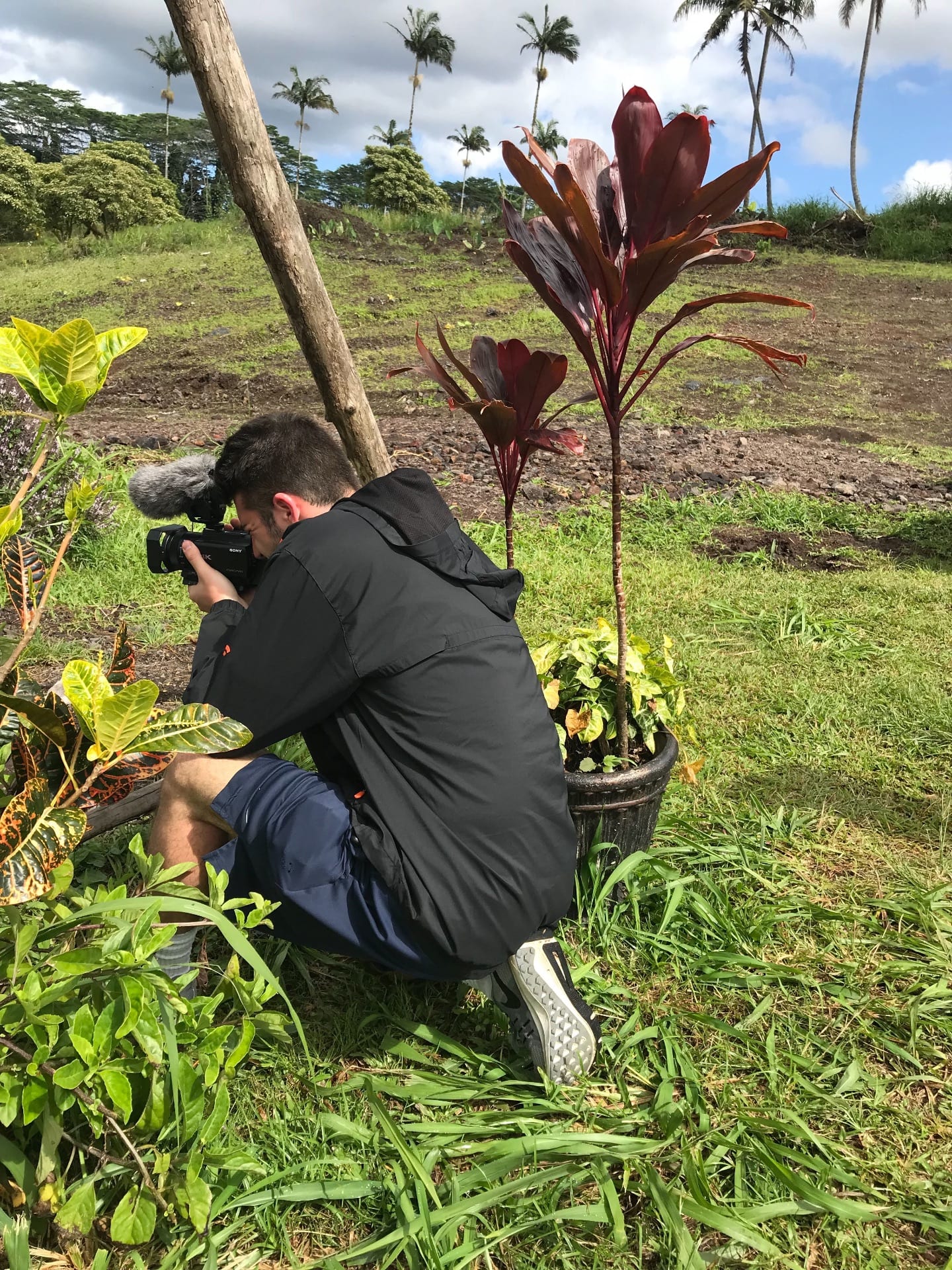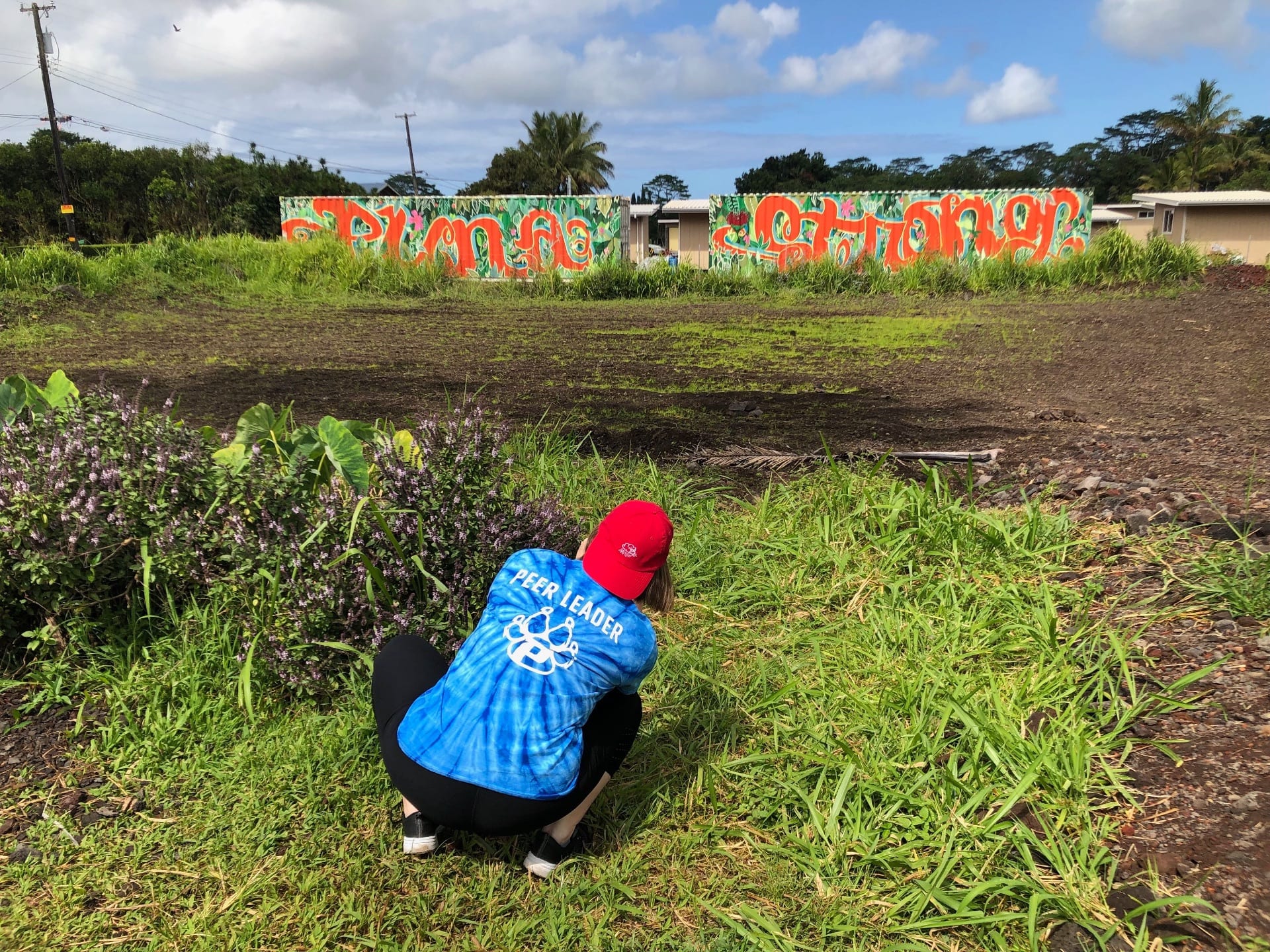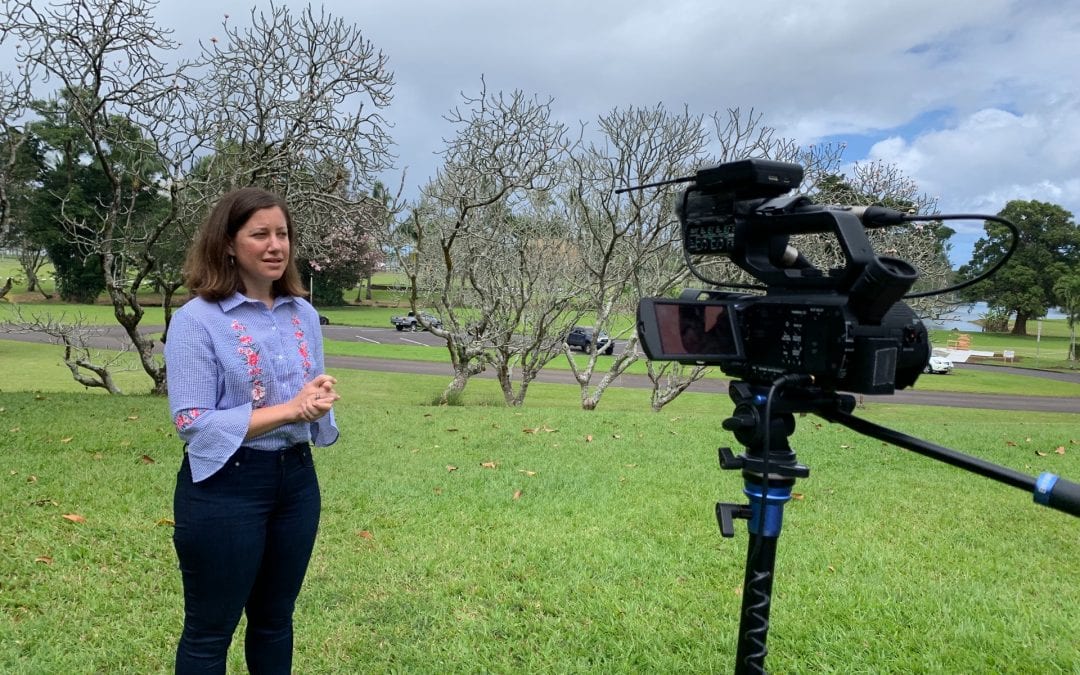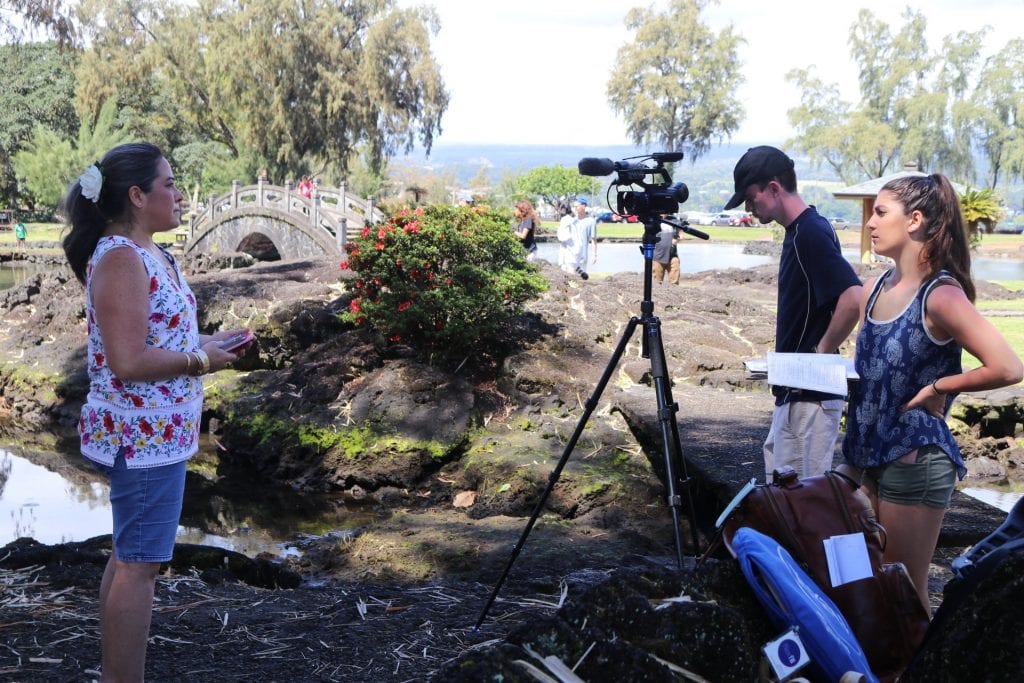Today was bittersweet as it marked our last full day of production. One crew stayed in Hilo, where they had a lighter day conducting the last needed series of interviews. They started at a beautiful park where they talked to a couple who lost their beach house in Kapoho Bay. She referred to the bay as an ice box, since it had everything they needed. For example, if they were hungry, they would go to the bay to catch food. When they knew the lava was coming, they evacuated all of their belongings and prepared the house for Pele’s arrival. They mowed their lawn, cleaned the house, and left an offering of gin, which is Pele’s favorite drink.
A small crew went to a church where they met people who helped with the after effects of Kilauea through charity. They also went to the District Court House to interview officials and then made their way to the University of Hilo to interview an economics professor. As those interviews were underway, another small group was invited to the home of Jill Steele. She is an author who we interviewed earlier in the week. Today, we spoke to her husband and son in their new house that lacks the cozy at home feeling.
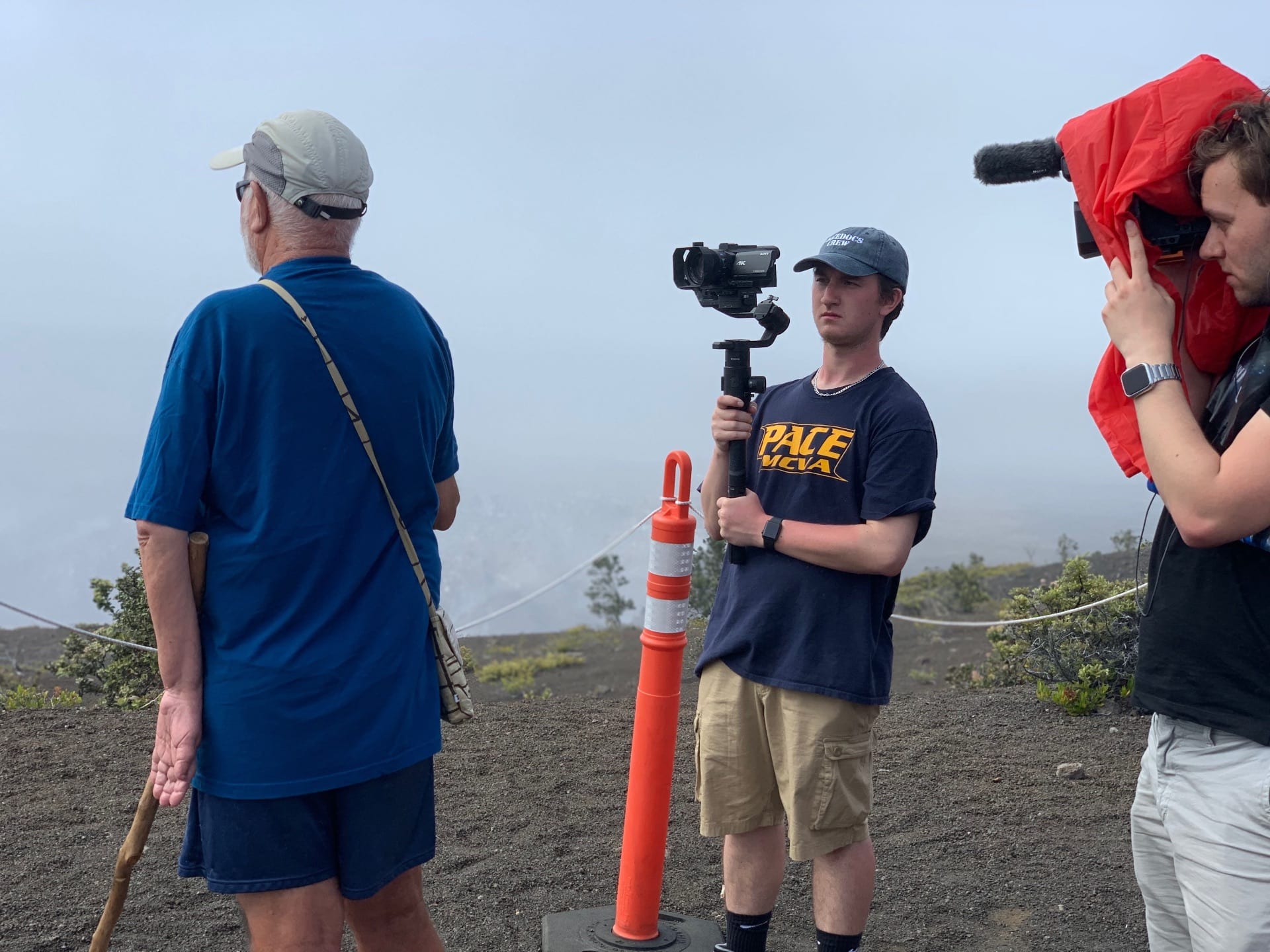
The other crew met a Pace alumni, Nidhi Chabora, this morning right in the hotel to interview her. She was surprised to see a film crew from Pleasantville New York, and was more than happy to talk with us about her experience with the eruption last year. They also went to interview Tom Peek, a novelist and former eruption ranger. His book, “Daughters of Fire”, was a great source of knowledge for the Pace Docs’ pre-production research, as well. His interview shed light on the relationships between the people of Hawaii to the land and the American colonizers. The interview was emotional and pushed our story further than we imagined. He was very welcoming and had valuable knowledge on the history of Hawaii and how western culture has suppressed the native Hawaiian culture and way of life. The crew then went back to the Hawaii Volcano National Park and went on a trail hike up to the other side of the big crater.
